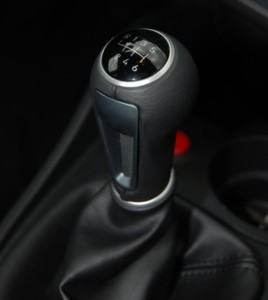 In my last post I looked at the history of maintenance. This post goes into more detail on the reasons why you should do maintenance. There are many more than merely to improve uptime. Let’s have a look at the different goals of maintenance. For illustration I will use the example of a car, since you are probably at least somewhat familiar with the maintenance of your car.
In my last post I looked at the history of maintenance. This post goes into more detail on the reasons why you should do maintenance. There are many more than merely to improve uptime. Let’s have a look at the different goals of maintenance. For illustration I will use the example of a car, since you are probably at least somewhat familiar with the maintenance of your car.
Reduce Frequency of Unplanned Downtime
 Maintenance in general helps the performance of your value stream. The first thing most people think of is to increase uptime, which is probably also the most frequent goal in maintenance. Sometimes this is also defined as to increase utilization. More precisely, however, would be to say that you want to reduce frequency of unplanned downtime, also known as reducing breakdowns both in frequency and duration.
Maintenance in general helps the performance of your value stream. The first thing most people think of is to increase uptime, which is probably also the most frequent goal in maintenance. Sometimes this is also defined as to increase utilization. More precisely, however, would be to say that you want to reduce frequency of unplanned downtime, also known as reducing breakdowns both in frequency and duration.
Maintenance itself will take time at the machines. However, it makes a huge difference if you can plan the downtime, instead of the downtime planning you! Let’s take the example of your car. Regular maintenance may take your car out of action for a day or so. It is a bit of a hassle, but you can plan for a day when you may not need the car, or you can pre-arrange a rental car. However, if you skip maintenance, eventually your car will break down. This may be more expensive and may also take more time to fix. But even if has the same cost and takes the same time, the hassle would be much more. You may have just loaded yourself and your family in the car to head off to vacation, and halfway there you have a breakdown. Now everybody has to wait, you have to get your car towed (by whom? to where?), and at least a day of holiday is wasted for everybody. Not fun!
Reduce Duration Unplanned Downtime
 In the event of an unplanned downtime, the goal is to get the machine back up and running quickly. The goal is to reduce the duration of unplanned downtime. Paper mills often have a maintenance team that has little to do and may be surfing the net… until there is a problem and they have to run. Downtime of a paper mill is very expensive. Your car may not be a good example for reducing unplanned downtime… unless you are into racing, in which case a maintenance car may be on standby to help you when your car has issues.
In the event of an unplanned downtime, the goal is to get the machine back up and running quickly. The goal is to reduce the duration of unplanned downtime. Paper mills often have a maintenance team that has little to do and may be surfing the net… until there is a problem and they have to run. Downtime of a paper mill is very expensive. Your car may not be a good example for reducing unplanned downtime… unless you are into racing, in which case a maintenance car may be on standby to help you when your car has issues.
Prevent Harm to People
 A second goal is to prevent harm to people. This is slightly overlapping with the reduction of unplanned downtime, but with a focus on the prevention of injury and death. This may be harm to yourself, your people, your customers, or other bystanders. Let’s take again the example of your car. If your brakes fail, it would be an unplanned downtime. The bigger issue, however, is the risk of an accident. This could lead to injury and death of your passengers and (oh no!) to yourself. Even if the safety features of your car protected the occupants, another person may get seriously hurt. If you run over a pedestrian, you will probably be fine. The pedestrian won’t. And, remember, we are all pedestrians sometimes. Historically, organized maintenance started due to exploding boilers of steam engines.
A second goal is to prevent harm to people. This is slightly overlapping with the reduction of unplanned downtime, but with a focus on the prevention of injury and death. This may be harm to yourself, your people, your customers, or other bystanders. Let’s take again the example of your car. If your brakes fail, it would be an unplanned downtime. The bigger issue, however, is the risk of an accident. This could lead to injury and death of your passengers and (oh no!) to yourself. Even if the safety features of your car protected the occupants, another person may get seriously hurt. If you run over a pedestrian, you will probably be fine. The pedestrian won’t. And, remember, we are all pedestrians sometimes. Historically, organized maintenance started due to exploding boilers of steam engines.
Maintain Product Quality
 Another goal that sometimes gets overlooked is to maintain product quality. Depending on your machine, maintenance can influence product quality. In the worst case, you may have to repair or scrap products. Even if the product is still acceptable, it may be not as good as it could have been. I had one example where a packaging machine added more items to a package due to an ill-maintained counting/measuring unit. Of course the customer had no issues with getting 10% more products, but the company lost money.
Another goal that sometimes gets overlooked is to maintain product quality. Depending on your machine, maintenance can influence product quality. In the worst case, you may have to repair or scrap products. Even if the product is still acceptable, it may be not as good as it could have been. I had one example where a packaging machine added more items to a package due to an ill-maintained counting/measuring unit. Of course the customer had no issues with getting 10% more products, but the company lost money.
Assume the driver-side window can no longer be opened. The car still drives, you can get around, but at every toll booth or at every entry or exit of a paid parking garage, you have to get out to get the parking ticket or pay the tolls. Very soon this will annoy the heck out of you. But it will be worse if the window is stuck in the open position. From temperature to thieving to rain, your driving experience will take a downturn.
Maintain Production Speed
 Similarly, a ill-maintained machine may no longer work at the maximum possible speed. Maintenance can help to maintain your production speed. This results in better output and lower production cost.
Similarly, a ill-maintained machine may no longer work at the maximum possible speed. Maintenance can help to maintain your production speed. This results in better output and lower production cost.
Using the example of a car, assume the car has a worn out manual gear. Shifting is possible, but a nuisance. The car drives, but the driving experience is unpleasant. Due to problems with shifting gears, the drive may be slower than a similar car with a well-working gearbox.
Reduce Cost
 Maintenance also helps to reduce cost. However, this is a double-edged sword. On the one hand, there is the cost of not enough maintenance. This includes all the points above and below, like unplanned downtime, harm to others, flawed quality, slow production speed. On the other hand, it is easy to go overboard with maintenance, and maintain too much and too often. There are reports of machines where the performance went down due to too-frequent maintenance requiring time consuming re-adjustments of the production parameters.
Maintenance also helps to reduce cost. However, this is a double-edged sword. On the one hand, there is the cost of not enough maintenance. This includes all the points above and below, like unplanned downtime, harm to others, flawed quality, slow production speed. On the other hand, it is easy to go overboard with maintenance, and maintain too much and too often. There are reports of machines where the performance went down due to too-frequent maintenance requiring time consuming re-adjustments of the production parameters.
Hence the goal is to find a trade-off between too much maintenance and too little. The problem is, nobody really knows where that is. The data supporting these decisions often simply does not exist. There is also a time lag between reducing or increasing maintenance, and a result in the system performance. It is a common trick of managers to reduce maintenance, save cost, get praised, and leave for another position before the system blows up three years later.
This is also easy to see with your car. The maker of your car probably recommends a maintenance schedule. Is this necessary? It sometimes feels like the recommendation is overly cautious. But then, I don’t know the effect of reducing maintenance. So far I’ve had my car serviced at the recommended intervals, although the nagging feeling remains if this is needed. In any case, to protect myself from legal liability (see next point), I suggest following the maintenance guidelines by the maker.
Reduce Legal Liability
 This also brings us to the last point, maintenance can help you to reduce legal liability. If somebody got hurt (physically, financially, emotionally) due to a flaw with your product, it may sometimes help to prove that your system was well maintained.
This also brings us to the last point, maintenance can help you to reduce legal liability. If somebody got hurt (physically, financially, emotionally) due to a flaw with your product, it may sometimes help to prove that your system was well maintained.
Cars in many countries have mandatory safety inspections, which is also a sort of maintenance. If you skip those, you will be in legal trouble even if nobody got hurt. If you hurt somebody else, the court won’t take it kindly if your mandatory inspection is out of date. Not all maintenance has the benefit of protection from legal liability, but it is sometimes also a consideration. Sometimes it may even be necessary to get an accreditation.
More Benefits of Maintenance
There are many more potential benefits of maintenance, although not all of them may apply to every situation. Maintenance can extend the lifespan of your equipment. It can help with ergonomics and efficiency. Sometimes maintenance is legally required for the equipment to be used (e.g. aircraft or cars). Maintenance can help you to get lower insurance rates, and it may even extend your warranty. It can also have a positive impact on the environment. Customers also like it if the manufacturer keeps his machines in order. (Many thanks to Rob van Stekelenborg for the additional suggestions in the comment) Now, go out, keep your machines in good running order, and organize your industry!
Series Overview
- A Brief History of Maintenance
- What Are the Goals of Maintenance?
- An Overview of the Eight Pillars of Total Productive Maintenance
- The Pillars of TPM – Focused Improvement
- The Pillars of TPM – Autonomous Maintenance
- The Pillars of TPM – Planned Maintenance
- The Pillars of TPM – Early Equipment Management
- The Pillars of TPM – Quality, Training, Administration, and Safety
- The Pillars of TPM – The Missing Pillar Reactive Maintenance?

Hi Christoph, if I may, I would include outcomes such as lengthening the technical lifespan of equipment (to avoid or delay capex), reducing its environmental impact (up to and incl. disposal/recycling at the end of life) and maintain a company’s reputation, improve the ergonomics, reduce the use of required operating supplies, and ensuring equipment is certified for use (in some service businesses this is an absolute need, a “license to operate”).
And things might even be broader when you think of maintenance related to more general facilities.
Hi Rob, cool suggestions. I took the liberty of adding them to the post, giving you credit for the ideas. Thanks!
Hello Christoph – it is a pleasure to read your posts. Keep up the good dialogue. Another benefit about equipment maintenance is by performing maintenance: 1. it can be a good educational experience for new operators to gain a greater appreciation for exactly how the equipment functions. They are better able to observe variations in equipment wear or equipment performance when trained how to do maintenance by an experienced mechanic/operator. 2. Equipment Operators can also gain greater appreciation and suggest equipment design improvements which could lead to a competitive advantage, like a equipment design patents or equipment modifications leading to safer shops or productivity improvements.
When trying to reduce the frequency of unplanned downtime, does supplier selection play a large role in increasing uptime & product quality over time? By sourcing quality materials for assembly or production, rather than standard cheaper materials, will increase utilization while also decreasing unplanned downtime that can be caused by the chapter-sourced materials. Sourcing more costly but long-lasting parts for production will help maintain product quality over a longer period of time, reducing repair frequency & costs. Higher quality & rated parts can also prevent harm to passengers providing a safer product that won’t frequently breakdown. Considering how many areas a supplier can impact in maintenance, how important is sourcing the right product that is dependable but more expensive for maintenance operation?
Hi Dylan, sourcing and maintenance have a connection, but to me it is not a strong one. Usually, the aim in getting quality supplies is more to produce quality products.
Hi Christoph, there is also not so strong link between maintenance and equipment design. The know-how accumulated while operating the equipment could be fed-back to the manufacturer for the manufacturing of more reliable and easy to maintain equipment. The feedback would be easier to give and implement if you deploy your own designed and manufactured equipment.
Hello Süleyman, that is correct. I would call it design for maintenance as part of the DesignForX group. Although, usually it is only an afterthought in design, if at all.